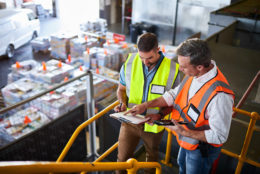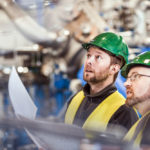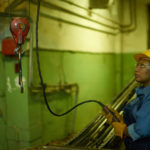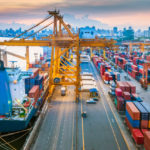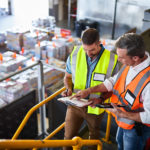IP Enclosure Water Classifications Defined

Ingress Protection (IP) codes are used to classify the degree of protection a piece of equipment has against intrusion by foreign bodies.
These intruding elements could be solid objects, dust, or water. Because certain mechanical devices can be damaged beyond repair by exposure to water, it’s important to know how much protection your crane, hoist, and accompanying equipment offers.
IP codes allow you to understand the degree of protection your equipment has against water in varying classifications, from withstanding small amounts of drizzle to direct submersion.
Knowing what type of protection your crane, hoist, or other mechanical equipment has against rain, snow or mud will help you save money on potential repairs and costly replacements.
Here are the 8 IP Enclosure Water Classifications defined so you’ll know which pieces of machinery will operate successfully in wet environments and which should steer clear of water.
How to Read IP Codes
Each IP code contains the letters IP followed by two digits.
The first digit represents what level of protection the equipment provides against intrusion by solid materials. The second digit represents the degree of protection against intrusion by water.
For example, an IP code of IP55 would indicate that the equipment offers level five protections against both solids and water.
Each IP rating level has a very specific meaning, and ranges from 0 to 8. Below are the definitions for each IP rating level:
0 – An IP code ending in a zero indicates that the equipment offers no protection whatsoever against liquids.
1 – The first level means the device can protect itself against vertically falling/dripping water. Water falling directly on top of the enclosure will cause no problems when the device is upright.
2 – The second level indicates that vertically dripping water has no effect when the enclosure is titled up to 15 degrees from standard position.
3 – The third level indicates that water spraying at any angle from vertical to 60 degrees has no harmful effects.
4 – Level four water protection and higher means you no longer have to worry about the tilt angle: level four protects against water splashing against the enclosure from any angle or direction.
5 – Fifth level moves beyond splashing water to water purposefully being applied to the crane or machinery. Level five means that the enclosure protects from water jets or hoses with a smaller sized nozzle (6.3 mm).
6 – The sixth level protects from more powerful water jets with a larger nozzle (12.5 mm).
7 – The final two levels of IP ratings describe protection from immersion in water. Level seven protection means that it is safe to submerge the enclosure underwater — but only for the pressures found at 1 meter of depth and, possibly, for a limited amount of time as specified by the manufacturer.
8 – Eighth level protection means that, while possibly limited by the conditions specified by the manufacturer, the equipment is suitable to be continuously submerged in water.
Often this means that the equipment itself is hermetically sealed, but it could also refer to equipment that is designed to take in water in a manner that has no harmful effects to the machinery.
When purchasing new crane or hoist equipment, keep in mind what level of IP protection is necessary for the applications you have in mind.
Contact Crane Repair Co with any questions or concerns about your crane or hoist’s resiliency against water before your next project.





